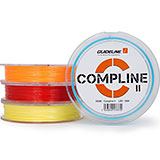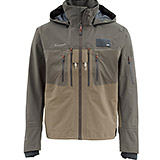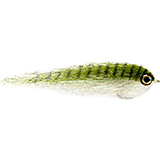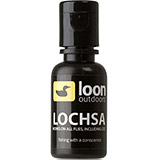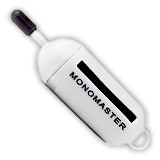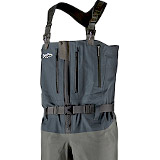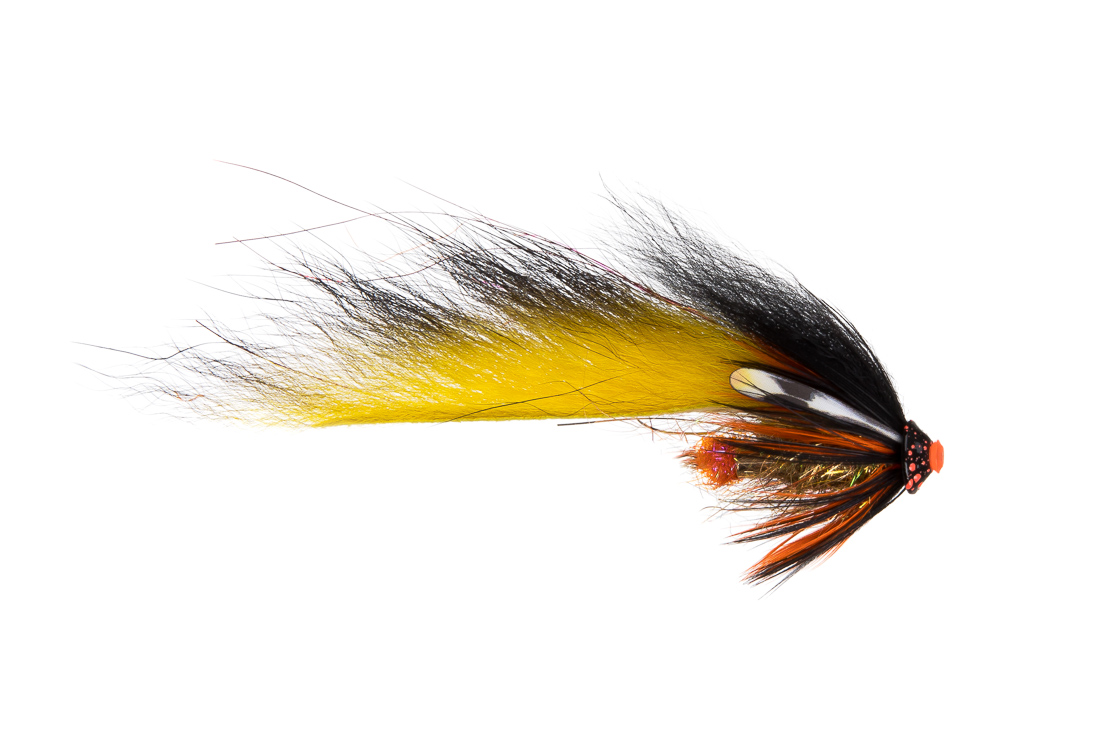Fly Fishing for Atlantic Salmon – a Compact Guide for Beginners

Constantly bent rods and one fish after another. If you’re looking for this, fly fishing for Atlantic salmon might not be fulfilling - argues our colleague Philip Casey, intoducing you to the world of Salmo Salar in this article.
Salmon fishing is an almost mythical discipline and has much more to offer than just numbers: a truly meditative nature, interrupted by pure powerlessness while fighting a fish, followed by an incomparable feeling of happiness. The fact that this combination is highly addictive isn’t surprising at all. When Salmo Salar starts to run up the rivers of Europe and the east coast of North America the pure power of the Atlantic Ocean is within casting range of the fly fisher. The annual salmon run shapes entire regions and attracts ambitious fly fishermen from all over the world. But, what exactly drives us salmon fishermen? Without a doubt, every single one of us can frame his very personal answer. It may be an inner impulse, the quest for a fish of a lifetime or simply the desire for being in harmony with nature. Anyway, fly fishing for Atlantic salmon is a pure fascination!
We have to admit that this article isn’t able to cover the whole complexity of the entire topic – honestly, this isn’t what it’s aiming for. It’s about creating a guide for beginners and to encourage them to get in touch with what will probably become their new passion. Since this is a responsible platform, we have to issue a strict warning: salmon fishing is highly addictive – the intoxicating effect of these experiences should not be underestimated. Therefore, we won’t assume responsibility for any kind of obsession or thirst for adventure that Salmo Salar might cause.
Roughly speaking, fly fishing for Atlantic salmon can be divided into two major components: the equipment and the tactical approach.
What do I need?
Rod:
Let’s focus on the equipment first. In order to form the magical connection between fisherman and fish one needs to make a variety of decisions. As usual, this starts with choosing an appropriate rod. Thus, you need to ask yourself one big question: Do I want a versatile setup or a setup that ideally suits a specific type of river?
Let’s start with the ideal solution. In fact, several factors determine the rod choice: first of all the size of the river, followed by the expected size of the fish and the current water level. Depending on the situation, every type of fly rod can be used for salmon fishing – single handed, switch or double handed rods. Very generalized, the following rod sizes can be recommended for the different types of rivers:
- Small rivers: single handed rods of class 7 or higher, switch rods of class 6/7 or higher and light double handed rods in class 7/8 or 8/9 with a length of up to 13 feet
- Medium rivers: double handed rods in class 8/9 or 9/10 with a length of 13 - 14 feet
- Large rivers: double handed rods in class 9/10, 10/11 and 11/12 with a length of 14 - 15 feet
Nevertheless, the exact spot that you’re planning to fish always influences the rod choice. Hence, even on a big river, you may find a spot that fishes best with a single handed rod. For example, pocket water in a rapid or a tight channel that doesn’t require a long line. Also, we need to consider that a lighter rod enables a more delicate and quite presentation. Our beloved Mörrum in the south of Sweden is a further example for the situational adaptation that different conditions require. While the spring fishing for massive fresh run salmon requires heavy equipment, the low water period during the summer months demands a stealth mode with light rods. This leads to a logical conclusion: If you know exactly when and where you will be fishing, you should equip yourself with an appropriate rod that matches the conditions of this specific river.
For those of you who prefer a versatile setup, a line class 9/10 double handed rod with a length of around 14 feet is the ideal choice. Just like a class 5 rod for trout fishing, this configuration enables you to fish a large variety of river types. Therefore, this is the classic entry rod into the fascinating world of double handed fishing.
Reel:
Besides an appropriate rod, a good reel is very important. When the desired fish is hooked, you really want to be using a reliable drag system. Further, the ideal salmon reel should combine the following features: it shouldn’t be too light because especially big double handed fly rods need a proper counterweight to be perfectly balanced. Otherwise, an unbalanced rod is an unnecessary burden that weakens your performance. Additionally, a closed spool cage is obligatory when fishing thin mono running lines for reaching longer casting distances. Last but not least, the perfect salmon reel should offer a generous line capacity for enough backing. 150 m are not exaggerated, because salmon are known to escape downstream. In such a moment, the fisherman has no choice but to follow the evader – pure, thrilling powerlessness!
Lines:
Adding an appropriate line, which should perfectly match the rod and the situation, completes the ideal setup. But, different types of lines and the necessity of various sink rates make the line choice rather complex. Especially one specific question divides the community of fly fishermen into two groups: full Spey line or shooting head? Without a doubt, both types offer some advantages. Most shooting heads have a rather compact design, which makes them better for transporting large flies and performing in windy conditions. On the other hand, due to the mostly longer belly of a Spey line, you need to strip in less line between the casts – a true advantage that shouldn’t be underrated, because at the end of the day your fly spends more time in the water. Additionally, many casting instructors are of the same opinion: Those who learn to cast with a Spey line won’t struggle when casting with shooting heads. However, a high level of flexibility and beginner friendly casting properties make shooting heads a good choice for starters.
Of course, every salmon fly fisherman should own a floating line. In fact, a long time ago, salmon flies were only swinging close to the surface – but these days are truly over. Whether fishing in Norway, Scotland, Russia or elsewhere: a modern salmon fly fisher should always have a variety of sinking lines close at hand. Modern sinking lines are very effective and easy to handle, because they consist of different densities that are seamlessly transitioned. Especially version with a floating rear end are extremely popular – for example the configurations F/S1/S2 and F/S2/S4. But, if conditions require an even deeper presentation, you can always go for a full sinker. As a matter oft fact, it is highly important to adapt the sinking rate to the current conditions. Otherwise you might “plough up” the gravel bed of the river. Therefore, shooting head systems with exchangeable tips are extremely popular and established. These systems enable a quick change of the tip and offer the highest amount of flexibility. The same occurs for so-called polyleaders. A set of these tapered leaders provides different sinking rates, which makes it a great addition to normal shooting heads.
Combining sinking lines with a long tapered mono leader or a very long tippet is a common mistake. In such a case, the fly swims much higher than the line, which seriously weakens the effect of a sinking line. Therefore, it is essential to use a short tippet when you want to fish deep – roughly about 1,5 m long. According to most fly fishermen salmon are not particularly leader shy. This is good news, because using a thin tippet for targeting these extremely strong salmonids is absolutely pointless. Thus, a 0,30 – 0,40 mm tick fluorocarbon or mono tippet is an appropriate choice. Needless to say, when rapids, trees or other obstacles are within reach of the fish you should definitely go for the upper end of the range. Sticking to thinner material in these situations is something that some of us will come to regret after loosing a fish – a truly unnecessary experience.
The Flies:
Once again, our next topic offers enough material to fill entire books: fly choice! But, how do we choose the right fly among billions of tube and hook flies? Every salmon fisherman has his own variants of famous patterns and personal favourites – some of them even seem to have magical powers. In fact, beginners should consider the following, highly important advice: Don’t panic! Every well-known pattern catches fish – you simply need to believe in it. Seriously, it is absolutely unimportant whether your fly has five or six strands of flash or whether it is tied with synthetic or real jungle cock. Hard to believe, how often you will be involved in these types of conversations along the river – especially after some fish have been caught. Superstition simply plays a major role in this mythical discipline. But, all successful salmon flies have one thing in common: the confidence of the fishermen. To get you started, these rules of thumb will help you to base your fly choice on more than just intuition:
- The colour of your fly should always match the tone of the river. For example, the classic „Willie Gun combination“ – yellow, orange and black – has proven to be very successful in tea-coloured water. By the way, black flies should never be missing in your fly box.
- The size of the fly depends on the water temperature. Cold water at the beginning of the season demands bigger flies, while small flies can be super effective during the warm summer months.
- The shininess of the fly should be influenced by the lighting conditions and the clarity of the water. On sunny days and in clear rivers you should trust discreet variants with less flash. But, when the river starts to get coloured, our flies should do the same!
It may sound absurd, but sometimes it’s a good idea to ignore all of these rules and to break them on purpose. This is a great way to set oneself apart from other fishermen – especially on highly frequented spots. If most of the other fishermen swing a small fly close to the surface, a big fly fished “deep and dirty” may surprise an otherwise reluctant salmon. At the end of the day, it is important to find your favourite style of fishing and the flies you trust. Then, you will be able to fish with confidence and enjoy every single moment.
The following and often essential accessories finalize your equipment for Atlantic salmon fly fishing:
- For most rivers, a pair of chest-high waders is absolutely essential. They enable you to reach the ideal casting position and to follow the fish during the fight.
- Polarized glasses will help you to spot following fish, to detect underwater structures and to protect your eyes in windy conditions (read more about “Polarized sunglasses in fly fishing”).
- A wading staff and a life vest will make wading in harsh conditions much safer. Salmon truly love fast flowing currents, and therefore we need to keep one thing in mind: safety first!
- Last but not least, a flask or another accessory with such a symbolic character is always good for celebrating a catch – especially when it’s a salmon! ;-)
The tactical approach
Let’s focus on practical fishing: Where, when and how can we catch the mythical Atlantic salmon? At this point, it has to be said that this article surely can’t cover every detail of the entire topic. But, it offers compact and essential tips, which will make your salmon start much easier and will help you to enjoy this fascinating discipline right away.
Where can we catch a salmon?
Salmon rivers come in almost every size: from the tiniest Danish streams that can be crossed with a brave jump, all the way to the massive Russian rivers with commercial shipping traffic. But, the smaller rivers are more appropriate for beginners, because they don’t require tremendous casting distances. In fact, promising salmon runs can be found almost around the entire Atlantic and Baltic coast: in Scotland, Iceland, all of the Scandinavian countries, in Russia and along the east cost of North America – but, unfortunately not in Germany any more. Therefore, for most of us, travelling is a necessary part of this discipline.
When can we catch a salmon?
The Atlantic salmon is an anadromous migratory fish. After spending some time in the Atlantic Ocean, the adults return to the rivers in which they were born in order to spawn. This is the moment of truth – also for the fly fishermen, because a “fresh” salmon that just entered the river is more likely to take a fly. Salmon runs can occur at different times of the year. Therefore, there are typical spring, summer and autumn rivers, which enables promising salmon fishing throughout the entire season. But, the classic spring fishing, for example in Scotland or Scandinavia, is very popular due to especially big specimens.
How can we catch a salmon?
Without a doubt, every type of river requires a specific approach. Therefore, this part of the article provides general ideas and basic techniques of salmon fishing that should get you started.
The most commonly used technique for catching salmon is called “swing”. Ironically, this thrilling style of fishing is extremely dynamic and stimulating – just like the identically named music genre. When fishing this style, the fly is classically placed downstream in a 45 degree angle. This allows your lure to temptingly cross the current – a technique that quite a few might know from wet fly fishing. By moving downstream after each cast, this turns into a very systematic and super effective way of fishing. As a matter of fact, the speed of the fly is of highest importance when fishing the swing. Luckily, it can be influenced in many different ways:
- By changing the angle – casting more upstream will increase the speed, and casting more downstream will lead to a slower drift.
- By mending the line, which can be described as creating an intentional bow in your line. An upstream mend slows your fly down, whereas a downstream mend seriously increases the speed.
- By additional stripping – a thrilling technique, which enables you to increase the speed of your fly in exactly the right moment. For example, when is passes the border between flowing and standing water.
When fishing the swing, it’s always important to keep one thing in mind: The fishermen himself, and not the current should decide the speed of the fly. Needless to say, the most spectacular part of this method is the take. It’s an incomparable experience when everything suddenly tightens and you feel a proper resistance at the end of your line. As the saying goes: “the tug is the drug”! In order to enjoy these experience as often as possible, we need to fish at the right spots. This brings us to the following question: Where exactly do we get the take?
Where exactly do we get the take?
As mentioned before: salmon truly love streaming water, because it provides them with visual protection and oxygen – especially during the warmer months. Additionally, moving water encourages these fish to take our flies. Therefore, we should concentrate our efforts mainly on flowing water. As a matter of fact, a variety of interesting structures seem to attract our target. Big stones and boulders create diverse underwater structure. Since they are not always scratching the surface, it is of highest importance to “read” the current. Interestingly, salmon like to lie in front of these structures. But, the entire area around an obstacle like this is a true hotspot – you should better hold your rod tight! Of course, deep pools, their necks and tails and also moderate rapids are prime spots and always good for a take. Obviously, spots that produced fish in the past are always worth a cast. But keep one thing in mind: Potential hotspots and their underwater structures are constantly changing. Hence, a successful salmon fisherman always needs to stay flexible!
The following helpful tips will end the chapter concerning the tactical approach:
- The fly should directly start to swing across the current. Otherwise you’re losing a large part of your drift. Therefore, a slightly shorter line can be more effective, because a proper presentation is the key to success.
- Long casts are not always desired. When “reading” the water you will find potential hotspots very close to the bank. It is really astonishing how many salmon are caught with only half of the shooting head in the water.
- Always be as quiet as possible – especially when fishing a small river. Easier said than done, because double handed rods can make us unnecessarily loud.
- The light change is always good – sleeping long in the morning and being the first next to the fireplace in the evening might be very relaxing, but your missing out on some of the best fishing!
Once again: breaking the rules of thumb is a great way to differ from other fishermen – especially when the fishing pressure is high. Minor details, such as fishing a bit deeper than the others, can make a huge difference and cause the magical moment.
The real challenge
As obvious it may sound: never give up and keep casting! Fly fishing for Atlantic salmon is not just physically demanding. Often, it’s the mental strength that sets the limit. Whenever you don’t get a take on a salmon trip you need to keep one thing in mind: The longer you wait for a fish, the bigger the pleasure of finally catching it. In the end, endurance pays off!
The philosophic component of salmon fishing is omnipresent. Hope, excitement, disappointment, or even desperation – Atlantic salmon let us go through every emotional state. In fact, this is what makes it so fascinating. We have to admit: catching one of these fish is anything but easy. But, what exactly motivates us to face this challenge? It might be the constant chance of catching a fish of a lifetime or simply the view of a jumping salmon within casting range – a feeling, that can’t be described and you truly have to experience on your own.
Catching such a dream fish – regardless of the size – can leave you speechless. That’s exactly the power of Salmo Salar. The first every salmon leads to a very special kind of smile – a smile that lasts for years.
























































Related products
P-14104
P-10408
















